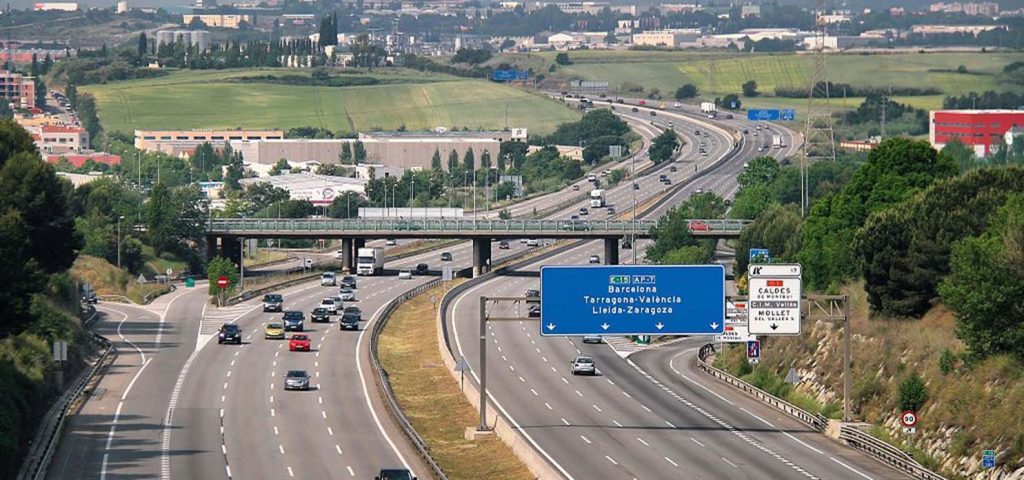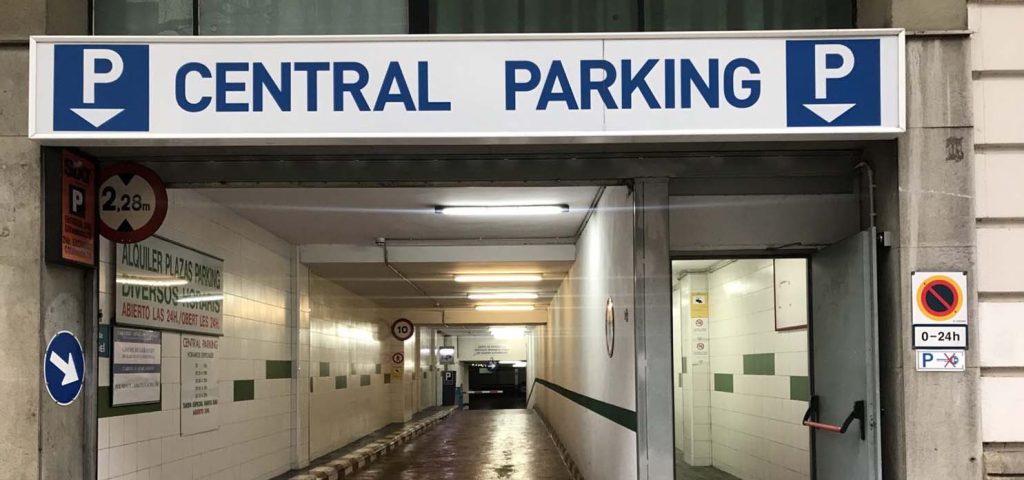Barcelona, the cosmopolitan capital of Spain’s Catalonia region, is known for its art, architecture, and vibrant culture. The city’s blend of ancient history and modernity makes it a fascinating destination for travelers. While Barcelona boasts an excellent public transportation system, some visitors prefer the flexibility and convenience of driving, especially if they plan to explore the surrounding areas. If you’re considering renting a car and driving in Barcelona, this comprehensive guide will help you navigate the process smoothly, offering insights on car rentals, traffic rules, parking, and tips to ensure a stress-free experience.
1. Why Consider Driving in Barcelona?
Driving in Barcelona can be a rewarding experience for several reasons:
- Flexibility: Renting a car allows you to explore the city at your own pace and venture out to nearby attractions like Montserrat, Costa Brava, or the Penedès wine region without the constraints of public transport schedules.
- Comfort: Traveling by car can be more comfortable, especially if you’re carrying luggage or traveling with family.
- Convenience: If your accommodation is located outside the city center or you plan on visiting multiple sites in a single day, having a car can save time and reduce the hassle of coordinating multiple modes of transport.
However, it’s essential to weigh these benefits against the potential challenges, such as traffic congestion, parking difficulties, and navigating unfamiliar streets.
2. Renting a Car in Barcelona
Where to Rent a Car
Barcelona has numerous car rental agencies, both international brands and local companies. You can rent a car at:
- Barcelona-El Prat Airport (BCN): The most convenient option for those arriving by air. Major rental companies like Avis, Hertz, Europcar, and Sixt have counters at the airport. Renting from the airport allows you to start your journey immediately.
- City Center Locations: If you’re already in the city, you can find rental offices in popular areas like Plaça de Catalunya, Sants Station, and near major hotels.
- Online Reservations: Booking your car in advance online is highly recommended. Not only can you compare prices and availability, but you can also ensure that your preferred vehicle is ready when you arrive.

Types of Cars to Rent
Barcelona’s narrow streets and parking challenges make compact cars a popular choice. However, the type of car you rent should depend on your needs:
- Compact/Economy Cars: Ideal for city driving, easy to park, and fuel-efficient.
- SUVs: A good option if you plan to explore rural areas or drive through mountainous regions.
- Luxury Cars: Available for those who want to travel in style, though these may be more challenging to navigate through tight city streets.
- Vans/Minivans: Suitable for larger groups or families, providing ample space for passengers and luggage.
Rental Requirements
To rent a car in Barcelona, you’ll need the following:
- Driver’s License: A valid driver’s license is required. If your license is not in Spanish or English, you may need an International Driving Permit (IDP).
- Age Restrictions: The minimum age to rent a car in Spain is typically 21, but some companies may require you to be 25 or older, especially for luxury vehicles. Drivers under 25 may also incur a young driver surcharge.
- Credit Card: A major credit card is usually required for the rental deposit. Some companies may accept debit cards, but this is less common.
- Insurance: Basic insurance is typically included in the rental cost, but it’s advisable to purchase additional coverage for peace of mind. Collision Damage Waiver (CDW) and Theft Protection are often offered as add-ons.
3. Traffic Rules and Regulations
Driving in Barcelona requires a good understanding of local traffic rules and regulations. Here are the key points to keep in mind:

Speed Limits
- Urban Areas: 50 km/h (31 mph)
- Residential Zones: 20-30 km/h (12-18 mph)
- Rural Roads: 90 km/h (56 mph)
- Motorways (Autopistas): 120 km/h (75 mph)
It’s crucial to adhere to speed limits as there are numerous speed cameras in and around the city.
Traffic Signs and Signals
Barcelona’s traffic signs follow the standard European format:
- Red Circles: Indicate prohibitions (e.g., no entry, no U-turns).
- Blue Circles: Indicate mandatory instructions (e.g., turn right, go straight).
- Yellow Lines: Indicate no parking zones.
- White Arrows: Indicate the direction of traffic flow on one-way streets.
Traffic lights are positioned at intersections, and turning right on a red light is not permitted unless there’s a specific sign allowing it.
Seat Belts and Child Safety
- Seat Belts: Mandatory for all passengers, both in the front and rear seats.
- Child Seats: Children under 135 cm (4 feet 5 inches) in height must use an appropriate child seat. Children must sit in the back seat unless the vehicle does not have rear seats.
Mobile Phone Use
Using a mobile phone while driving is illegal unless you have a hands-free system. Fines for using a phone while driving are steep.
Alcohol and Drugs
The legal blood alcohol limit is 0.05% for regular drivers and 0.03% for new drivers (with less than two years of experience). Spain has strict penalties for driving under the influence, including heavy fines, license suspension, and even imprisonment.
4. Navigating Barcelona’s Roads
One-Way Streets
Barcelona has many one-way streets, especially in the older parts of the city like the Gothic Quarter. Pay close attention to road signs to avoid fines or getting lost.
Roundabouts
Roundabouts are common in Barcelona. When approaching a roundabout, yield to traffic already circulating. Make sure to signal your intentions when entering and exiting the roundabout.
Pedestrian Zones
Certain areas of Barcelona, such as Las Ramblas and parts of the Gothic Quarter, are pedestrian-only zones. Driving through these areas is prohibited, and violators may be fined. Look for signs indicating pedestrian zones and plan your route accordingly.
Zonas de Bajas Emisiones (Low Emission Zones)
Barcelona has implemented Low Emission Zones (LEZ) to reduce air pollution. These zones restrict the entry of older, more polluting vehicles. If your rental car is not compliant with LEZ regulations, you may face fines. Check with your rental company to ensure your vehicle is allowed to enter these areas.
5. Parking in Barcelona
Parking in Barcelona can be one of the most challenging aspects of driving in the city. Here’s what you need to know:

On-Street Parking
- Blue Zones (Zona Azul): Paid parking zones where you can park for a limited time (usually 1-4 hours). You must purchase a ticket from a parking meter and display it on your dashboard. These zones are usually in effect from Monday to Saturday, with free parking on Sundays and public holidays.
- Green Zones (Zona Verde): Primarily for residents with permits, though non-residents can park for a fee, usually for a shorter duration than in blue zones.
- Yellow Lines: Indicate no parking areas.
Always check the signs near your parking spot to avoid fines or towing.
Parking Garages
Parking garages are a convenient option, especially in the city center where on-street parking is scarce. While more expensive than on-street parking, garages offer security and the convenience of paying by the hour or day. Some popular parking garages are located near Plaça de Catalunya, the Gothic Quarter, and Sagrada Família.
Park & Ride
If you prefer not to drive in the city center, consider using a park-and-ride facility. You can park your car on the outskirts of the city and use public transportation to reach your destination. This option reduces the stress of finding parking in busy areas.
6. Road Trips from Barcelona
One of the major advantages of renting a car in Barcelona is the ability to embark on road trips to explore the beautiful Catalan countryside and coastal areas. Here are a few popular road trip destinations:
Montserrat
Located about an hour’s drive from Barcelona, Montserrat is a stunning mountain range known for its unique rock formations and the famous Santa Maria de Montserrat Abbey. The drive offers scenic views, and once there, you can hike, visit the monastery, and enjoy the breathtaking landscapes.
Costa Brava
Costa Brava, a picturesque coastal region north of Barcelona, is renowned for its beautiful beaches, charming villages, and crystal-clear waters. Towns like Tossa de Mar, Lloret de Mar, and Cadaqués are perfect for day trips or overnight stays. The drive along the coast is particularly scenic, with plenty of opportunities to stop and admire the views.
Penedès Wine Region
Wine enthusiasts will enjoy a trip to the Penedès region, just 45 minutes from Barcelona. This area is famous for its cava (sparkling wine) and other high-quality wines. Many vineyards offer tours and tastings, making it a great destination for a relaxing day out.
Tarragona
Tarragona, about an hour south of Barcelona, is a city rich in Roman history. You can explore ancient ruins, including the impressive Roman amphitheater, and enjoy the city’s beaches and
Mediterranean cuisine.
7. Driving Tips and Safety Advice
Plan Your Route
Barcelona’s streets can be confusing, especially for first-time visitors. Use a GPS or a reliable map app to plan your route before you set off. Keep in mind that some areas may have restricted access or one-way streets, so it’s essential to have an alternative route in mind.
Avoid Rush Hour
Barcelona’s rush hours are typically from 8:00-10:00 AM and 5:00-8:00 PM. Traffic during these times can be heavy, particularly in and around the city center. If possible, plan your driving outside of these hours to avoid congestion and save time.
Stay Alert for Motorcycles and Scooters
Barcelona has a high number of motorcycles and scooters, which often weave through traffic and can be challenging to see. Always check your mirrors and blind spots before changing lanes or turning, and give motorcycles plenty of space.
Fueling Up
Gas stations (gasolineras) are widely available throughout Barcelona and the surrounding areas. Most stations offer both self-service and full-service options. It’s a good idea to familiarize yourself with the types of fuel available (e.g., gasoline, diesel) to avoid filling up with the wrong type. Diesel is labeled as “Gasoil” and gasoline as “Gasolina.”
Emergency Numbers
In case of an emergency, dial 112 for immediate assistance. This number is used for all emergency services, including police, fire, and medical.
8. Alternatives to Driving in Barcelona
While driving offers flexibility, it’s not always the most convenient option, especially in a busy city like Barcelona. Here are some alternatives to consider:
Public Transportation
Barcelona’s public transportation network is extensive and reliable. The metro, buses, and trams can take you almost anywhere in the city. A T10 ticket or Hola Barcelona Travel Card offers unlimited travel on public transport for a set number of days, making it an economical choice.
Taxis and Ride-Sharing
Taxis are plentiful in Barcelona, and ride-sharing services like Uber and Cabify are also available. These options are convenient if you prefer not to navigate traffic or deal with parking.
Biking and Walking
Barcelona is a bike-friendly city with dedicated bike lanes and numerous bike rental services. Walking is also a great way to explore the city, especially in areas like the Gothic Quarter, where cars are restricted.
Driving in Barcelona can be a rewarding experience, offering the freedom to explore the city and its surrounding regions at your own pace. However, it’s essential to be well-prepared, familiarizing yourself with local traffic rules, parking options, and the challenges of navigating a busy urban environment.